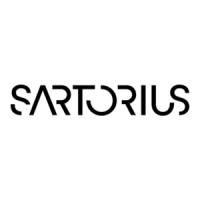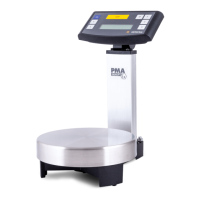24
- Center the required weight on the weighing pan (101).
- If the balance/scale accepts the weight, the „+“ sign displayed will go
out.
The „+“ and „–“ signs indicate that:
„+“ - the calibration weight loaded is too light
„–“ - the calibration weight loaded is too heavy
or
„+/–“ goes out in the displ. - the calibration weight loaded is within the
tolerance range and has been accepted
- Shortly thereafter, the IC107 microprocessor will accept the calibration
weight value, and the „+“ sign, the weight unit symbol „g“ as well as the
analog bar graph will be indicated in the display.
- Unload the balance/scale. The balance/scale is now ready to operate.
- Push the menu access switch back to the right, and close the opening by
replacing the protective cover (114).
Calibrating in the Gross Value Mode
- Turn off the balance/scale by pressing the key.
- Remove any load from the balance/scale (clear weighing pan (101)).
- For gaining access to the calibration function, remove the protective cover
(114) on the front right-hand side of the balance, and push the menu-
access switch to the left.
- When you turn on the balance/scale by pressing the key, hold down
the die
T
control and the
F1
key. Release the
T
control and the
F1
key once the readout shown on the left is indicated in the display.
- A positive value will be indicated in the display with a decimal point but
with no weight unit symbol.
- To start the calibration process, press the
F1
key.

